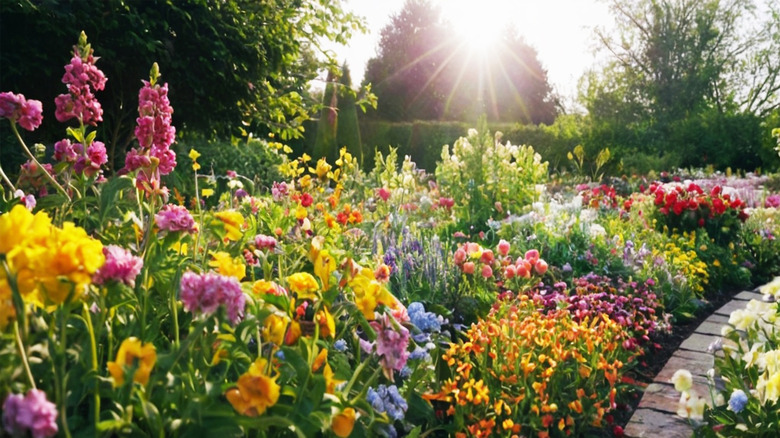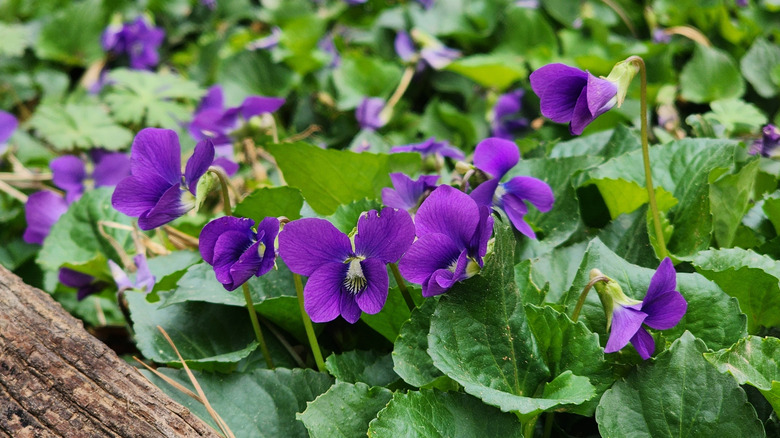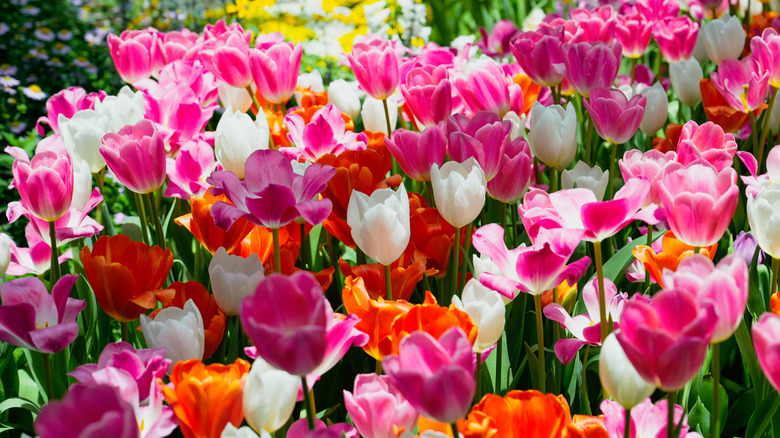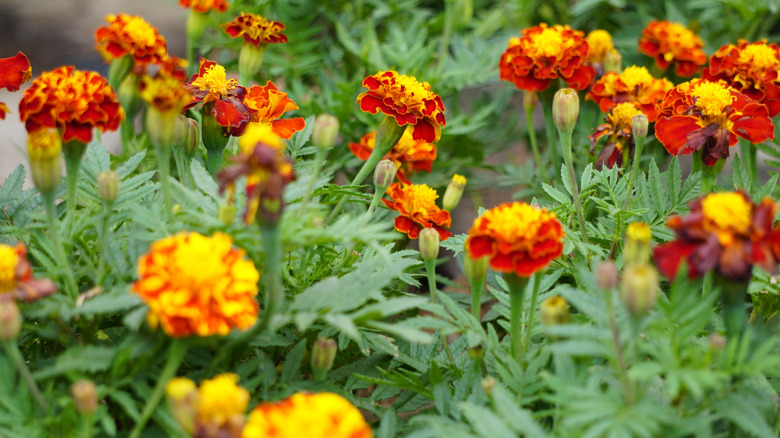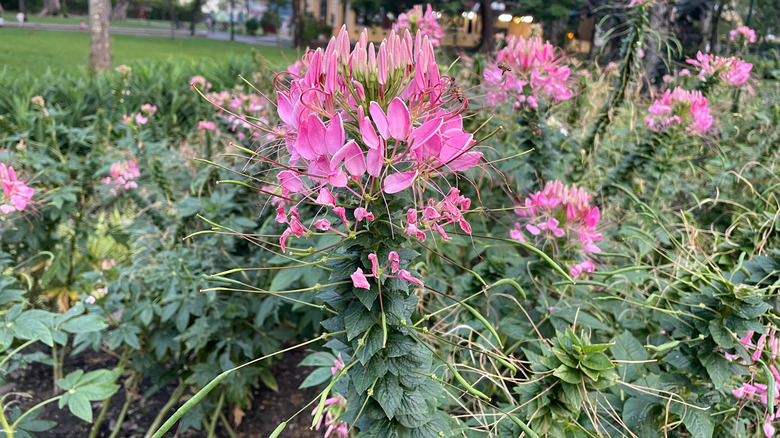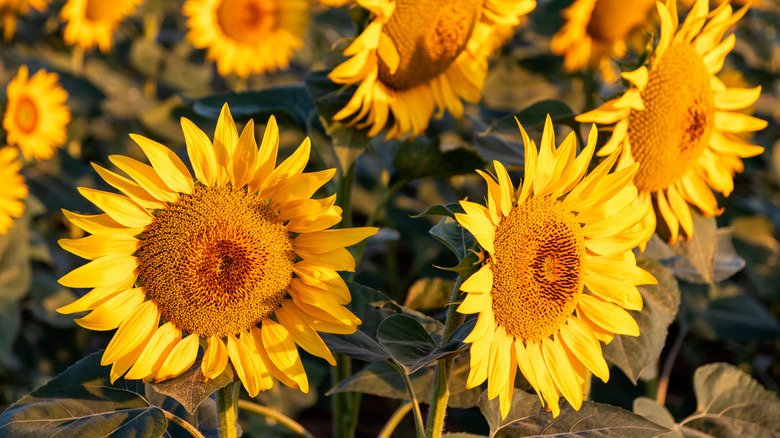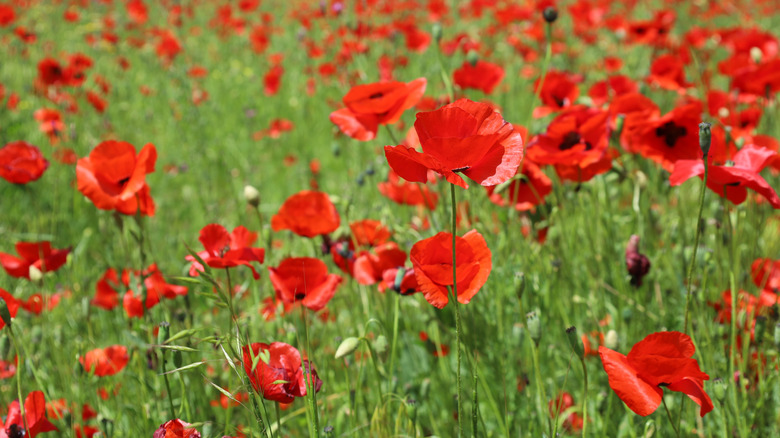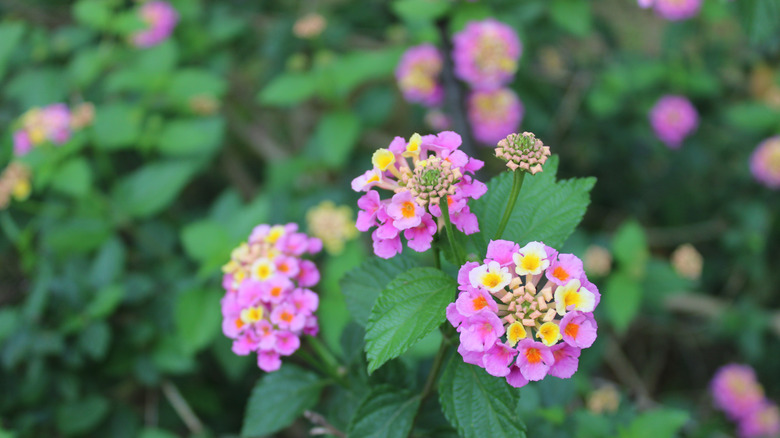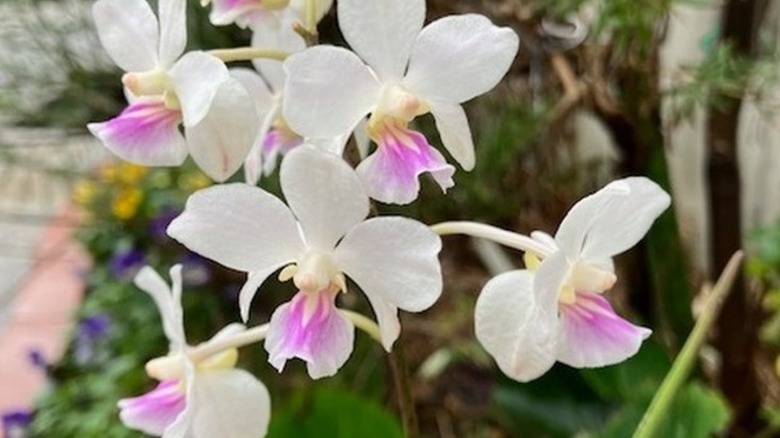10 Varieties Of Self-Pollinating Flowers To Brighten A Garden With Effortless Color
While it's nice to blanket your garden with pollinator-friendly plants, the pollen carriers may still give your place a miss. Not out of chagrin or unfounded enmity, but because it got too cold, or the sun was blazingly hot, or they didn't like how strongly the raindrops fell against their tiny bodies. Sometimes, though, it could also be because you used pesticides in your garden, unintentionally getting rid of the good bugs. Regardless of the "why," the problem remains: with few or no pollinators around, your garden is sure to look drab and dispirited. However, you could rectify this situation by incorporating a few self-pollinating flowers, such as violets, sunflowers, zinnias, cleome, poppies, marigolds, and many more, as you'll discover shortly.
So, what exactly are self-pollinating plants? Basically, such plants have bisexual flowers, meaning they comprise both male and female reproductive organs. Given the short distance, the pollen can usually travel to the ovule cavity without the help of pollinators, resulting in viable seeds. This enables the plant to hatch out its return as well as maintain its lineage, preserving characteristics inherited from the parent plant. You're also assured of a reliable harvest and color, particularly in small spaces where you lack the advantage of mass planting that is often necessary to draw in pollinators. Besides, saving seeds is easier with self-pollinating plants. With the basics set, here's a quick roundup of 10 varieties of self-pollinating flowers to enliven your garden.
Common blue violets
Given how many butterflies and bees line up around common blue violets (Viola sororia) for their heavenly nectar, it might surprise you that these perennials can self-pollinate. But nature can be mysterious that way. In fact, violets have multiple ways to reproduce: through pollinators as well as asexually and via clones. So, when the pollinating insects aren't to be found, violets produce petal-less flowers at root-level that set fertile seeds, ensuring their spread. Additionally, they shoot out stolons, birthing baby plants and lacing your garden with gorgeous flowers, provided you're in zones 3 through 7.
Tulips
Tulips (Tulipa spp.), the iconic flowers available in a wide spectrum of colors except blue, are quite nifty about pollination. While they certainly enjoy the attention from insect pollinators when they're available for business, tulips aren't wholly dependent on their services. Since they produce perfect flowers, meaning they've got both male and female reproductive organs, they can just self-pollinate. That being said, they are easier to propagate through bulbs rather than via seeds. Due to this, it's ideal to remove spent blooms to encourage the production of offshoot bulbs that replicate their genetic material, maintaining plant lineage.
Marigolds
Marigolds (Tagetes spp.) are worth considering if you're looking for reliable summer color in the garden. Marigolds are easy to grow and are also important from the standpoint of attracting pollinators, including butterflies. However, what's interesting is that even in the absence of pollinating insects, marigolds are self-fertile because their reproductive organs are in the vicinity of each other. But it must be noted that the seeds produced are fewer than they would be had the plant been pollinated by insects. Luckily, germination rates remain largely similar. Note that this may not hold for hybrid cultivars, as they usually produce sterile seeds.
Zinnias
Zinnias are perhaps one of the best flowers to attract pollinators, including butterflies, because of their long bloom times, bright colors, and rich nectar (unless bred out in a hybrid). However, they can self-fertilize, as they contain all reproductive parts within their blooms. This also explains why, when gardeners and breeders find a beautiful zinnia trait they would like to save, they often isolate those flowers or cover them so that no bees unintentionally pollinate them with a different pollen strain. Zinnias grow best in well-draining sites receiving at least eight hours of direct sunlight.
Cleome
A favorite in Southern gardens, cleomes are widely planted for their steadfast summer color and the vertical interest they add through tall flower spikes that unfold from the bottom up. But there's another reason to add them to your beds: their perfect, bisexual flowers that self-pollinate if beneficial bugs are off duty. In fact, certain U.S. natives, such as Cleome serrulata and Cleome lutea, are more vigorous when they aren't open or cross-pollinated. Moreover, regardless of the pollination method, seed production and viability levels remain comparable. Do note this doesn't apply to newer, hybrid cultivars (such as 'Senorita Rosalita') that don't set seeds.
Sunflowers
While sunflowers (Helianthus spp.) certainly trust honey, bumble, and long-tongued bees to help move pollen, they can still set seeds in isolated conditions. This is especially true for newer varieties that have been bred to be fully self-fertile. The reason for this is that the inner disc in sunflowers opens successively, first producing anthers (pollen source), followed by the stigma in the evening. Exposure to light breezes can ensure fertilization, though it must happen within two days before the stigma withers. However, seed production is usually low in these cases, which your backyard birds may find disappointing.
Poppy
Prized for their frost tolerance and eye-catching late spring displays, poppies (Papaver spp.) usually form a part of various wildflower mixes. But what you may not know is that they can self-pollinate. Before their flowers fully unfurl their petals, their anthers may've already burst open, releasing the pollen for fertilization. Because of this, they may well be on their way to producing seeds before the bees have had a go at their blooms. It's best to plant the variety native to your area. Poppies require full-to-part sun exposure.
Common lantana
If you live in the southeast, where common lantana (Lantana camara) is invasive, you will regret planting this vibrant, hummingbird-attracting flower in your yard — and you shouldn't do so. However, in northern or central U.S. regions, where these plants are popularly grown as drought-tolerant annuals, you can benefit from their self-pollinating habit. As their petals unfurl gradually, they let the pollen encounter the stigma and fertilize the plant. A 2014 study published in Weed Biology and Management (via Wiley online library) found that when lantana's flowers are isolated, they still manage to produce fruits, albeit in a limited quantity.
Daffodils
Although daffodils (Narcissus spp.) are popular with bees in the wild, the improved varieties that you see more often in the nurseries usually aren't. That's because they've been hybridized to produce the best-looking blooms, and the manual breeding eventually negated the need for pollen in these cultivars. Yet, when planted in their desired location — full or filtered sun and fine-draining soils — daffodils reliably return year after year without any pollinator aid because they form daughter bulbs. But if you're willing to wait about seven years and don't mind pollinating them by hand, you can grow daffodils from seeds.
Holcoglossum amesianum orchid
Holcoglossum amesianum orchids accomplish something truly unique: going against gravity to self-pollinate. When these epiphyte orchids — which usually grow on trees — are up for fertilization, they'll move their anthers until they can directly empty their pollen into the stigma of the same flower. That way they can do without the presence of pollinators or wind action. Another surprising fact? This works even when the plants are drought-stressed. To enjoy these orchids and bask in their gardenia-esque fragrance, pot them up or place them in baskets in a well-draining medium, exposed to bright light.
